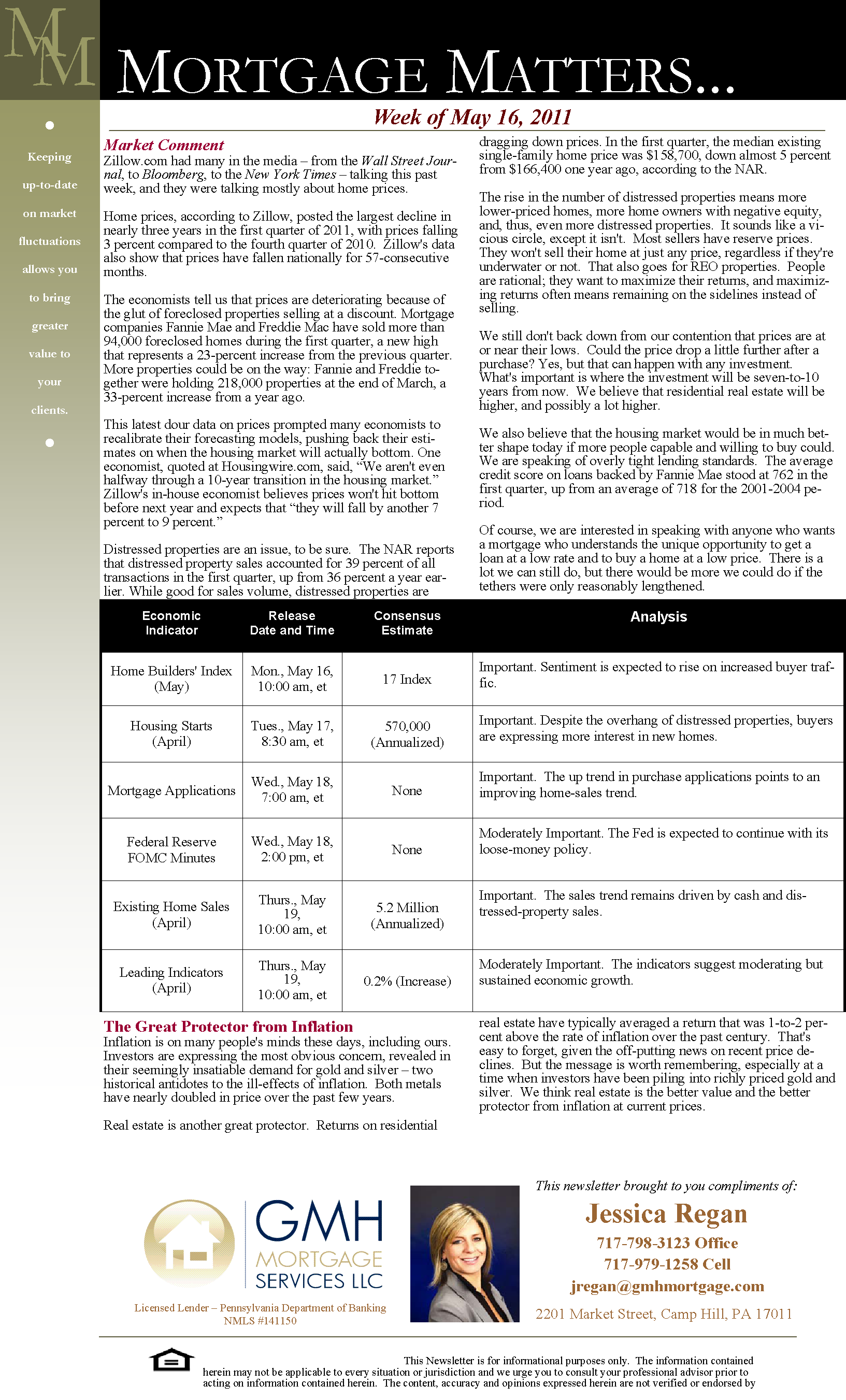Harrisburg PA Mortgage Market Recap - Jan 4 2012
The news is understandably slow the week between Christmas and New Year's Day. The most notable release was last Friday's news on new home sales, which rose to an annualized rate of 315,000 units in November, a 1.6-percent gain over October.To be sure, we have a long way to go until we reach the normalized construction rate of 1.5-million units per year. Nevertheless, we expect the new-home market to gain pace in 2012. After all, there are only 158,000 units in inventory. Even at the current slow sales pace, this equates to a record low six-month supply.
Over the past three years, new-home construction has fallen far below historical norms and also below the level needed to keep pace with population growth. The fact is our country gains roughly 2.7 million people and one million new households annually.
You might not see supply as a problem. We are all familiar with the glut of distressed properties. Indeed, Bank of America expects eight million distressed homes to come to market over the next four years. These homes, we've so often heard, will continue to depress new home construction.
We view B-of-A's outlook with a skeptical eye. There is a likely prospect that many of these distressed properties will simply go away. Destruction is too frequently overlooked in many supply projections. A house is not a permanent structure. Many are destroyed by fire, wind and flood each year. Many more are lost through simple decay and abandonment. Based on U.S. Census data, 300,000 homes are lost annually. That number will surely rise in years to come.
In short, the math – low inventory plus more households minus more home destruction – suggests to us a rebound in new-home construction. We are not alone in this contention, either. Wells Fargo projects that housing starts will continue to rise each year for the next five years before reaching once again the normalized construction rate of 1.5-million units annually by 2017.
Of course, projections are one thing, betting on those projections is another. Here, we see an encouraging trend. Big money is starting to wager on housing. The Wall Street Journal reports that many large hedge funds are investing billions in housing-related investments. Other investors have followed suit. Shares of homebuilders are up 30 percent over the past three months, making them one of the best performing investments in the market.
Courtesy of Jessica Regan.
Search all Harrisburg PA homes for sale.
When you are buying or selling property in today's Harrisburg PA real estate market, it's important to have confidence in your real estate professional. Don’s commitment as your Harrisburg PA REALTOR® is to provide you with the specialized real estate service you deserve.
When you are an informed buyer or seller, you'll make the best decisions for the most important purchase or sale in your lifetime. That's why Don’s goal is to keep you informed on trends in Harrisburg PA real estate. With property values continuing to rise, real estate is a sound investment for now and for the future.
As a local area expert with knowledge of Harrisburg PA area communities, Don’s objective is to work diligently to assist you in meeting your real estate goals.
If you are considering buying or selling a home or would just like to have additional information about real estate in your area, please don't hesitate to call me at (717) 657-8700, complete my online form, or e-mail me at don@donroth.com.









